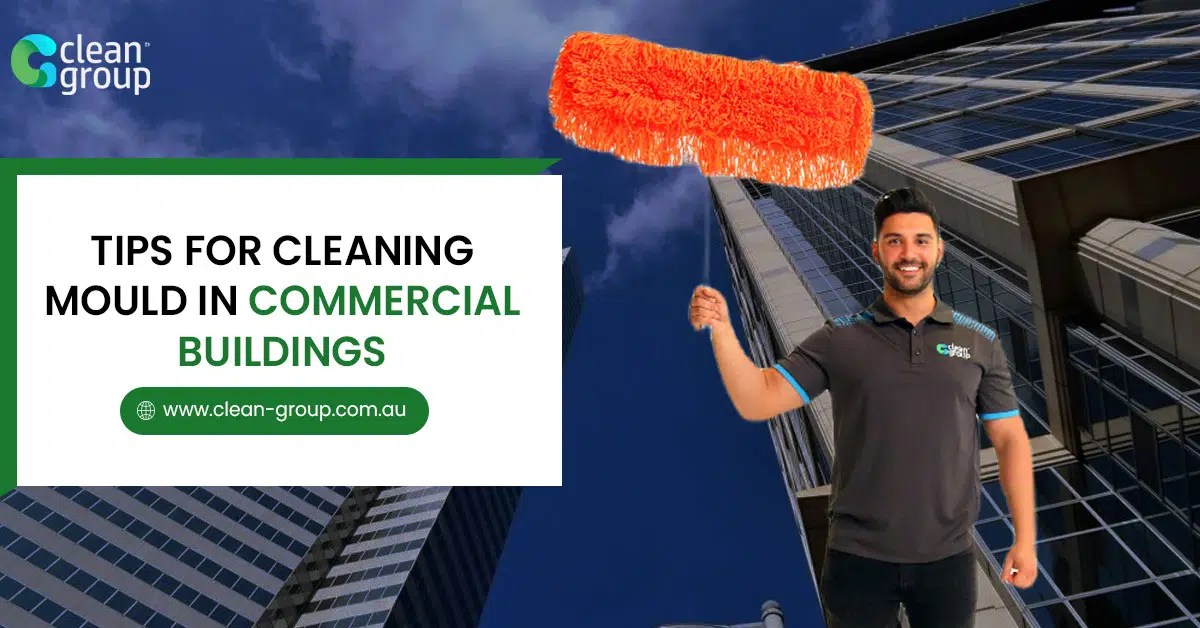Mould can be detrimental to the health and safety of buildings. In Sydney, many commercial buildings struggle with the mould problem due to the city’s high humidity levels. The good news is that commercial cleaning can help reduce or completely eliminate the mould issue in commercial properties. Here’s everything you need to know about mould-cleaning methods for your commercial buildings.
What is Mould Cleaning and Why is it Important?
Mould is a common problem in damp and humid environments, such as old buildings. Timely and accurate handling can mitigate the problem.
Mould is one of the worst enemies of your building. It not only makes your place look bad but can also pose serious threats to the well-being of occupants.
The first impression matters a lot for commercial establishments. With mould growing on your walls, it would be difficult to make a great impression on visitors, whether it’s potential clients or partners.
Mould makes your place look attractive and can also damage the building’s structure and reduce its lifespan.
The growing mould problem in your building can further contribute to a range of health problems, from nasal congestion and sneezing or coughing to serious respiratory infections, asthma and allergic conditions.
Mould spreads quickly and can turn into a disaster if not addressed immediately.
Mould cleaning involves cleaning the mould using specialised products and processes to remove the problem and not just cleaning on the surface level. Regular cleaning or methods may not work here. If you need help, don’t hesitate to call a professional cleaning company.
How to Know if You Have a Mould Problem?
Spotting or identifying mould is easy. It normally looks like black or green (or sometimes white) patches and is visibly ugly. It may form on damp or moistened surfaces, including wall corners, glass, windows, and furniture.
Top Methods Professionals Use for Cleaning Mould in Commercial Buildings
The correct method to remove mould will depend on the surface type. Glass and metal are considered non-porous surfaces, while upholstery, drywall and wood are porous.
Cleaning non-porous surfaces such as metal for mould is relatively easier because the mould is usually surface-level. Here’s how professional commercial cleaners do it:
Method #1 Mould Cleaners
These are products that professionals use to clean mould in commercial buildings. Mould cleaners are designed to break down and eliminate mould completely. They can remove mould as well as contain their spread.
Different mould cleaners are suitable for different surface types. Choose and buy accordingly.
Since mould cleaners contain chemicals, you must wear proper gear while using them. Always read the instructions on the package.
- Apply the solution directly on the affected surface, covering it completely.
- Let it sit for a few minutes, or follow the instructions given in the manual.
- Scrub thoroughly using a brush, paying attention to spores.
- Wash with clean water. Let it dry completely.
- Make sure the area is not in direct contact with moisture.
Method #2: Mould Cleaning Bleach
Bleach is an easily available and effective commercial cleaning product that also works on mould. It’s particularly suitable for mould removal from non-porous surfaces.
Bleach contains a chemical solution that cleans up mould quickly and effectively. Make sure to follow the safety instructions on the package when using bleach for cleaning mould.
- Mix one part bleach with around 10 parts water to form a proper solution. (Avoid direct contact with bleach. Use gloves and masks at all times)
- Apply the solution directly to the affected surface, covering it entirely.
- Let it sit for a few minutes, or follow the instructions in the manual.
- Use a brush to scrub clean the mould without damaging the wall or surface itself.
- Dry it completely.
Method #3: Commercial Mould Cleaning with Hydrogen Peroxide
Hydrogen Peroxide is commonly used for cleaning mould. It’s a chemical compound that breaks down mould and is particularly suitable for large spaces.
As a chemical-based product, Hydrogen Peroxide can have serious health impacts, so cleaners must take precautions and use proper safety gear.
- A 3% hydrogen peroxide solution is the safest option to use without health risks. It contains 3% chemical mixed with water.
- Apply the solution directly to the affected surface, covering it entirely.
- Let it sit for a few minutes, or follow the instructions in the manual.
- Use a brush to scrub clean the mould without damaging the wall or surface itself.
- Wash or wipe the area. Dry it completely.
Method #4 Carpet Mould Cleaning
Mould can grow on carpets and carpeted floors in commercial premises, especially in areas used or cleaned less frequently or exposed to moisture.
The immediate removal of mould from carpeted floors is a must to protect them from serious damage and reduce health risks.
- First of all, vacuum the entire carpet, including the mould area, to get rid of loose dirt and spores.
- Find and buy a carpet-friendly mould remover. Follow the cleaning instructions carefully.
- Apply the solution to the mould and scrub gently using a soft brush.
- Wash with clean water and let it dry completely before use.
- Keep your carpets and upholstery away from moisture.
Method #5 Wood And Drywall Mould Removal
Drywall and wooded areas, including furniture, can easily attract mould upon coming into contact with moisture over a period. The best way to deal with the problem is to hire an office cleaning company.
The key is to identify and eliminate the problem immediately before it gets a chance to spread. Here’s how professionals do it:
- Vacuum the surface using a machine with a HEPA filter. This will remove any loose dirt, grime and spores.
- Since drywall is a porous surface, bleach may not be very effective here. Most cleaners prefer to use Borax, which is a safe and effective cleaner. Alternatively, you can use a market-based, suitable mould remover.
- Mix one part borax with 10-20 times water. Apply the solution directly to the surface. It will break down the mould over a few minutes.
- Scrub clean using a gentle brush or cloth.
- Wash with clean water and make it completely dry.
- Consider applying a mould-resistant seal to surfaces prone to mould.
Recommended Post: What Caused the Mould to Appear on the Ceiling?
Hire Professional Commercial Cleaners for Mould Cleaning in Sydney
As it sounds, commercial cleaning can be complex and time-consuming. Your average cleaner may not know how to clean mould properly without damaging the surface. This is why it’s better to trust professionals, especially for cleaning delicate surfaces like couches and carpets.
If you’re looking for an expert for cleaning mould in your commercial building, call Clean Group to book a free onsite quote in minutes. We can handle any job, big or small, ensuring 100% mould removal with complete safety and satisfaction.

